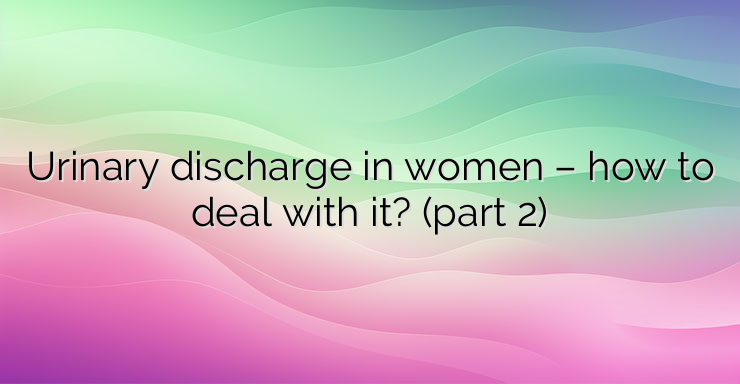Urinary incontinence is a condition that has a major impact on quality of life. It is any complaint of involuntary leakage of urine that affects up to 10% of all women, especially in the elderly, with a frequency reaching over 23% in those over 60 years of age. There are three types of incontinence: stress, urge and mixed. Urinary, on the other hand, is the involuntary release of urine, accompanied or immediately preceded by an irresistible urge to urinate. This condition accounts for about 14% of all urinary leakage cases. Mixed incontinence is associated with symptoms on the spectrum between stress and urge incontinence. (For more information about stress incontinence, you can read “Ultra Leakage in Women – How to Deal With It?”) In most cases, urge incontinence is caused by involuntary contractions of the bladder. Another mechanism for the occurrence is the relaxation (relaxation) of the smooth muscles of the urethra, accompanied by increased abdominal pressure. In addition to voiding, urge incontinence also causes a number of other symptoms such as frequent urination, nighttime urination (nocturia) and sudden urges to urinate (urgency). In one third of women, incontinence occurs when coughing, physical effort or another provocative moment. Sometimes the discharge is so great that the entire bladder is emptied, this significantly impairs the quality of life. Abnormal activity of the urinary muscles is due to inflammatory, tumor, lithiasis (stones) or obstructive diseases of the excretory system. Neurological conditions affecting micturition (urinating) control, such as multiple sclerosis, Parkinson’s disease, Alzheimer’s disease, spinal cord injuries, and cerebrovascular disease can also cause urinary tract symptoms. In the majority of cases with urge incontinence, however, no organic or neurological disease is found. The discharge is then attributed to various causes such as an abnormality of the smooth muscle cells setting the contraction rhythm, a generalized disturbance in the smooth muscle function, insufficient production of smooth muscle relaxing substances such as prostacyclins or psychosomatic genesis. NEWS_MORE_BOX Treatment of urge incontinence is mostly conservative such as bladder training. The goal is to restore lost volitional control. Urinates at certain intervals, holding back urges that may occur before the appointed time to urinate. Gradually, the interval between micturitions increases to reach 2-3 hours or more. Bladder training achieves symptomatic healing in over 80% of cases, but requires persistence and motivation. Another method of conservative treatment is the electrical stimulation of the pelvic floor, which also gives good results, but is not developed in our country.The most extensive conservative treatment remains medication. Agents are used that suppress the contractile abilities of the bladder. Such, for example, is tolterodine, which is taken at 2 mg twice a day in the absence of contraindications. Antispasmodics also have a relaxing effect on the smooth muscle of the bladder, as do beta-adrenergic agents and tricyclic antidepressants. Antidepressants such as amitriptyline, nortriptyline or amipramine pain the potassium and calcium channels on the membranes of smooth muscle cells and thus relax them. Surgical treatment is secondary in treatment and is applied in strictly selected cases with the impossibility of achieving a satisfactory result from conservative methods. It includes two types of interventions – denervation of the bladder or increasing the capacity of the bladder.


Leave a Reply